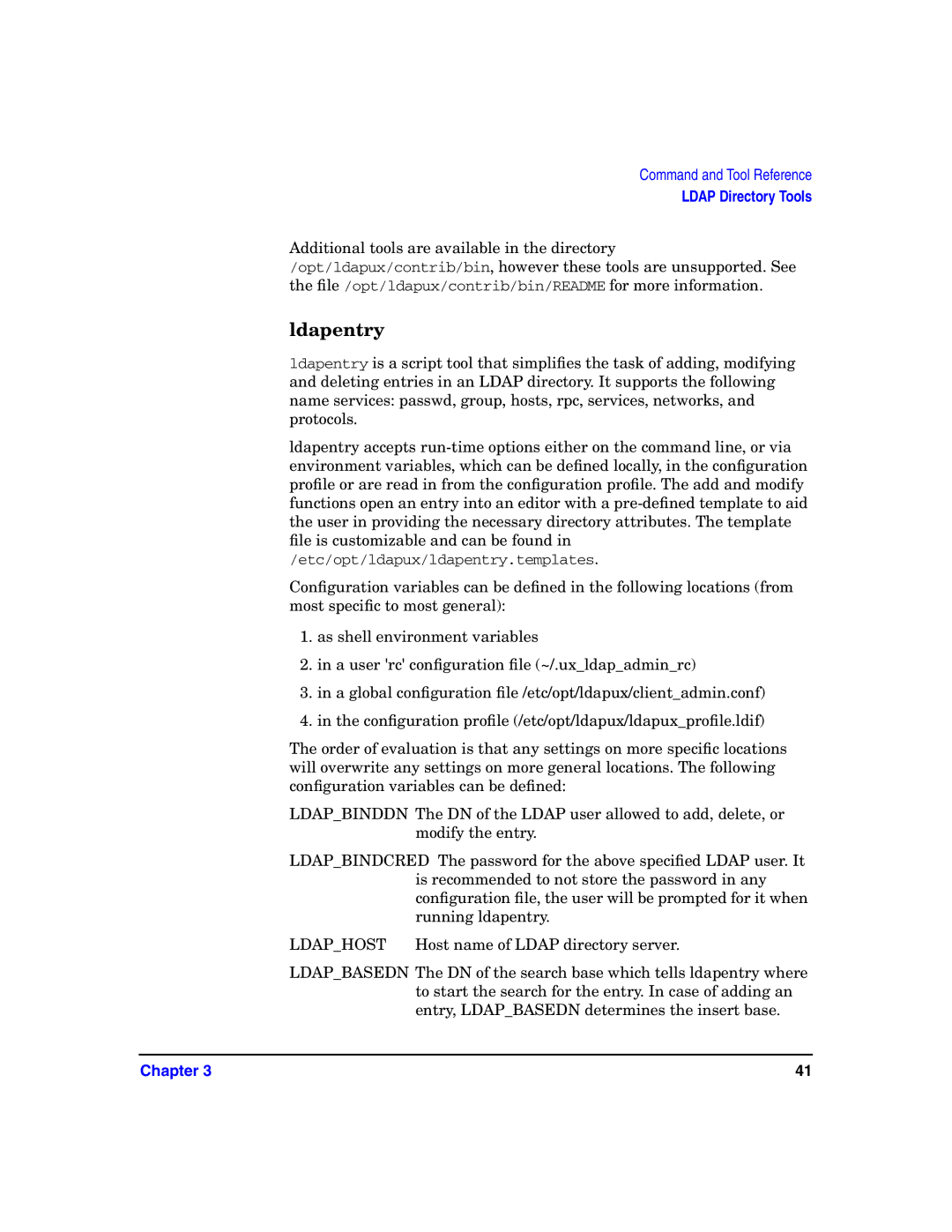Command and Tool Reference
LDAP Directory Tools
Additional tools are available in the directory /opt/ldapux/contrib/bin, however these tools are unsupported. See the file /opt/ldapux/contrib/bin/README for more information.
ldapentry
ldapentry is a script tool that simplifies the task of adding, modifying and deleting entries in an LDAP directory. It supports the following name services: passwd, group, hosts, rpc, services, networks, and protocols.
ldapentry accepts
/etc/opt/ldapux/ldapentry.templates.
Configuration variables can be defined in the following locations (from most specific to most general):
1.as shell environment variables
2.in a user 'rc' configuration file (~/.ux_ldap_admin_rc)
3.in a global configuration file /etc/opt/ldapux/client_admin.conf)
4.in the configuration profile (/etc/opt/ldapux/ldapux_profile.ldif)
The order of evaluation is that any settings on more specific locations will overwrite any settings on more general locations. The following configuration variables can be defined:
LDAP_BINDDN The DN of the LDAP user allowed to add, delete, or modify the entry.
LDAP_BINDCRED The password for the above specified LDAP user. It is recommended to not store the password in any configuration file, the user will be prompted for it when running ldapentry.
LDAP_HOST Host name of LDAP directory server.
LDAP_BASEDN The DN of the search base which tells ldapentry where to start the search for the entry. In case of adding an entry, LDAP_BASEDN determines the insert base.
Chapter 3 | 41 |
